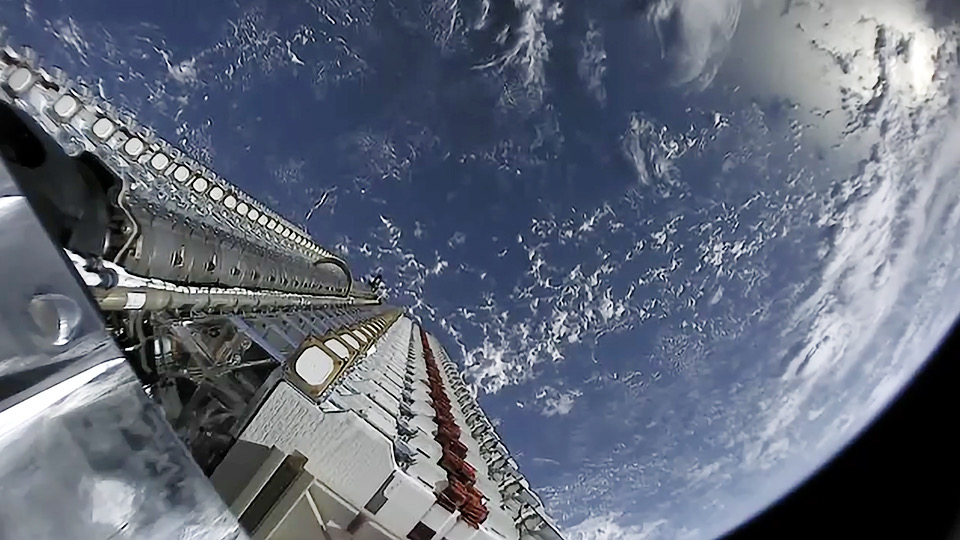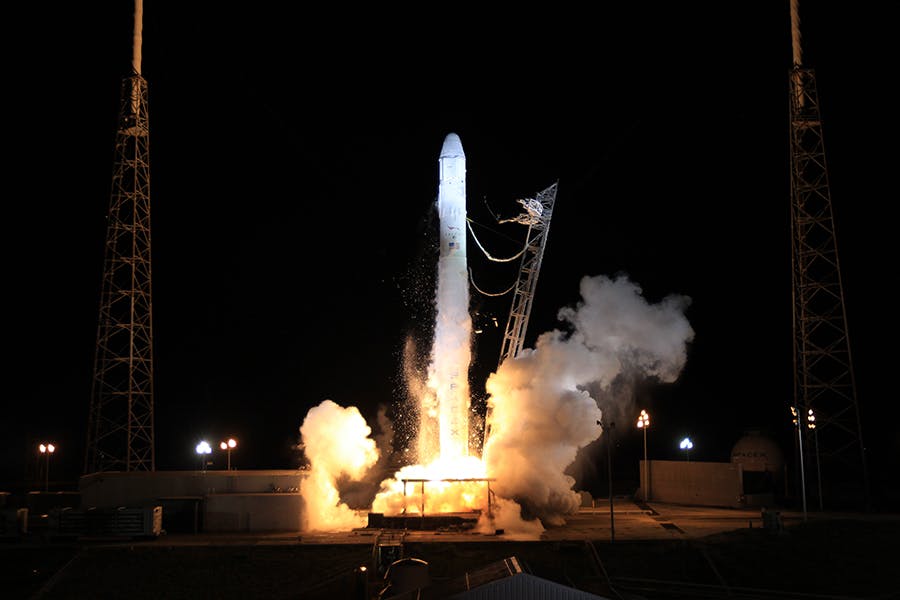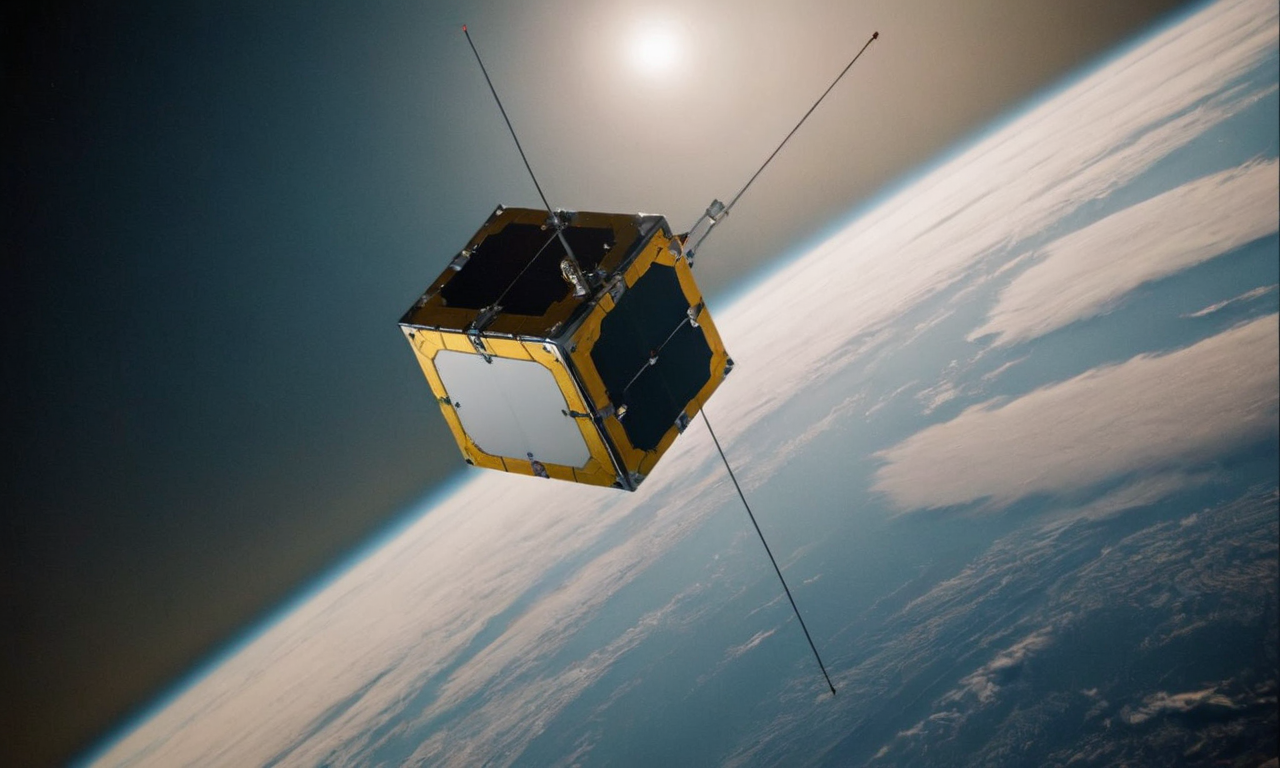· space brief · 6 min read
Space Brief 18 Aug 2025
Today's Space Brief covers significant satellite launches by SpaceX, an automated collision avoidance system development, Rocket Lab's strategic acquisition, and the rise of corporate-named satellites in orbit.

📄Top Stories
Today’s headlines highlight SpaceX’s continued expansion of the Starlink constellation with multiple launches, Rocket Lab’s acquisition of Geost to bolster its national security capabilities, and further strides in automated collision avoidance systems by ESA. Additionally, the introduction of corporate-named satellites showcases new strategies in space industry branding.
📰Detailed Coverage
SpaceX Expands Starlink Constellation with Landmark Launches
SpaceX continues to augment its Starlink broadband service with dual launches from California and Florida, marking the 100th Falcon 9 flight of the year. This week’s California launch added 24 satellites to the company’s existing constellation of over 8,100 in orbit, with liftoff scheduled at 9:23 a.m. PDT from Vandenberg Space Force Base. These launches reinforce SpaceX’s aggressive deployment strategy aimed at global internet coverage.
In this milestone, SpaceX has demonstrated the reliability of its Falcon 9 rocket and further cemented its role in the burgeoning satellite internet market. The simultaneous operation of launches from the east and west coasts reflects the company’s operational prowess and strategic logistics planning.
Read the full story: Spaceflight Now
Read the full story: Space Daily
Automated Collision Avoidance Advances Closer to Deployment
With Earth’s orbit becoming increasingly crowded, ESA is advancing its Collision Risk Estimation and Automated Mitigation (CREAM) project, which aims to streamline response times for satellite operators facing collision threats. The system processes vast amounts of satellite data to automatically estimate and mitigate collision risks, addressing the congestion challenge created by over 11,000 active satellites and 1.2 million debris fragments.
This innovation highlights the urgent need for improved space traffic management tools as the number of objects in orbit continues to swell. As these systems move closer to operational deployment, satellite operators will gain critical support in maintaining space safety, aligning with our web app’s focus on providing detailed tracking information and alerts to enhance situational awareness in space.
Read the full story: Space Daily
Rocket Lab Bolsters Security Offerings with Geost Acquisition
Rocket Lab has completed the acquisition of Geost, an industry leader in electro-optical and infrared (EOIR) payload systems, to boost its national security capabilities. The transaction, valued at $275 million, includes cash payments and Rocket Lab shares, plus a performance-based earnout. This strategic move aims to enhance Rocket Lab’s portfolio with advanced monitoring and reconnaissance technologies.
By integrating Geost’s specialized technology, Rocket Lab is better positioned to serve government and military clients with EOIR payload capabilities, strengthening its competitive edge in the space sector. This acquisition reflects a growing trend of consolidations in the industry as companies aim to expand capabilities to capture emerging opportunities.
Read the full story: Space War
Zoomlion’s Satellites: Pioneering Corporate Space Branding
Zoomlion Heavy Industry has launched its first satellite, marking a significant leap in its strategic expansion into the digital and green technology sectors. Deployed aboard a Jielong-3 rocket, the satellite is part of the larger Geely Constellation Group 04 mission, showcasing a novel approach to blending corporate identity with space endeavors. This initiative underscores a broader trend of private companies leveraging space for both functional and branding purposes.
This milestone represents a new phase where traditional earthbound sectors like engineering machinery seek to enhance their global digital presence through satellite technology. As more companies deploy corporate-branded satellites, these trends pave the way for novel applications and partnerships within the space industry.
Read the full story: Space Daily
🛰️Satellite Spotlight
- Satellite Name: ONEWEB-0324
- NORAD ID: 49193
- Launch Date: September 14, 2021
- Mission: The satellite is part of the OneWeb constellation aimed at providing global communication services.
- Orbit: Low Earth Orbit (LEO)
- Operator: OneWeb
- Fun Fact: ONEWEB-0324 is built on the Arrow bus platform, which allows for a lightweight yet robust design, enhancing its operational efficiency and longevity.
Track this satellite in real-time on our web app: Track ONEWEB-0324
🌌Space Weather
Space weather conditions are currently quiet.
Current
R0 - S0 - G0
Last 24 Hour Maximums
R0 - S0 - G0
Recent Alerts
- Ongoing Alert: Electron 2MeV Integral Flux exceeded 1000 pfu since August 10, with yesterday’s maximum reaching 8023 pfu. Potential impacts on satellite systems include significant charging and increased risk to satellite operations.
Next 24 Hours
-
Radio Blackouts Probability
- Minor: 15%
- Major: 1%
- Risk: None
-
Solar Radiation
- Probability: 1%
- Risk: None
-
Geomagnetic Storming
- Scale: 0
- Impact: none
- Activity: Low
-
Impact Summary
- Next 24 hours: No risk of radio blackouts or solar radiation storms.
- Geomagnetic outlook indicates periods of G1 (Minor) geomagnetic storms likely on August 19 due to negative polarity Coronal Hole High-Speed Stream (CH HSS) influence.
- Radiation outlook shows no S1 (Minor) or greater solar radiation storms expected as no significant active regions are favorable for radiation storm production.
- Slight chance for isolated R1-R2 (Minor-Moderate) radio blackouts over August 18-20.
Long Term Forecast
- Forecast of Solar and Geomagnetic Activity (August 18 - September 13, 2025):
- Solar activity is expected to be at low levels, with chances for M-class flares (R1-R2/Minor-Moderate events) through September 13.
- No proton events are anticipated at geosynchronous orbit.
- Greater than 2 MeV electron flux is expected to reach high levels on August 21-22, 27-28, and September 4-13.
- Geomagnetic field activity likely reaching G1 (Minor) storm levels on August 19, and active levels on August 20 due to negative polarity CH HSS influence.
- Active conditions anticipated again on August 28 and possible periods of G1-G2 (Minor-Moderate) storming on September 5, with active conditions likely on September 4 and 6 due to positive polarity CH HSS influence.
- The remainder of the period may remain at quiet or quiet to unsettled levels.
🚀Upcoming Space Launches
August 18
- SpaceX Falcon 9 Block 5:
- Starlink Group 17-5
- Launch Site: Vandenberg SFB, CA, USA
- Launch Time: 15:44 UTC
- A batch of 24 satellites for the Starlink mega-constellation - SpaceX’s project for space-based Internet communication system.
August 19
- CAS Space Kinetica 1:
- Unknown Payload
- Launch Site: Jiuquan Satellite Launch Center, People’s Republic of China
- Launch Time: 07:25 UTC
- A share ride mission of various satellites, including ThumbSat-1/2 of Mexico. Details TBD.
August 20
- ROSCOSMOS Soyuz 2.1a:
- Bion-M No. 2
- Launch Site: Baikonur Cosmodrome, Republic of Kazakhstan
- Launch Time: 17:13 UTC
- Bion-M is the next generation of Russian biological research satellites with enhanced capabilities for longer mission duration and increased scientific equipment.
August 21
- Russian Space Forces Angara 1.2:
- Kosmos (Unknown Payload)
- Launch Site: Plesetsk Cosmodrome, Russian Federation
- Launch Time: 08:30 UTC
- Unknown classified payload for the Russian military.
August 22
-
SpaceX Falcon 9 Block 5:
- OTV-8 (X-37B) (USSF-36)
- Launch Site: Kennedy Space Center, FL, USA
- Launch Time: 03:40 UTC
- Eighth flight of the X-37B program, conducting tests and experiments for reusable space capabilities and next-generation technologies.
-
SpaceX Falcon 9 Block 5:
- Starlink Group 17-6
- Launch Site: Vandenberg SFB, CA, USA
- Launch Time: 15:44 UTC
- A batch of 24 satellites for the Starlink mega-constellation - SpaceX’s project for space-based Internet communication system.
August 24
-
SpaceX Falcon 9 Block 5:
- Dragon CRS-2 SpX-33
- Launch Site: Cape Canaveral SFS, FL, USA
- Launch Time: 06:45 UTC
- 33rd commercial resupply services mission to the International Space Station, providing supplies and payloads critical for science and research investigations.
-
SpaceX Starship:
- Flight 10
- Launch Site: SpaceX Starbase, TX, USA
- Launch Time: 23:30 UTC
- 10th test flight of the two-stage Starship launch vehicle.
August 27
- SpaceX Falcon 9 Block 5:
- Starlink Group 10-11
- Launch Site: Cape Canaveral SFS, FL, USA
- Launch Time: 05:49 UTC
- A batch of 28 satellites for the Starlink mega-constellation - SpaceX’s project for space-based Internet communication system.
Note: Launch dates and times are subject to change due to technical or weather considerations.

Maurice Stellarski





